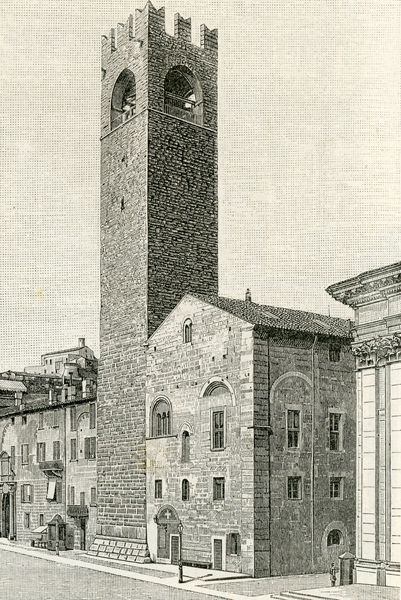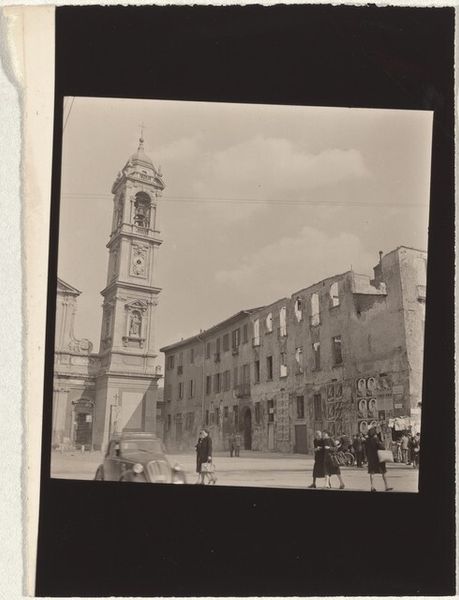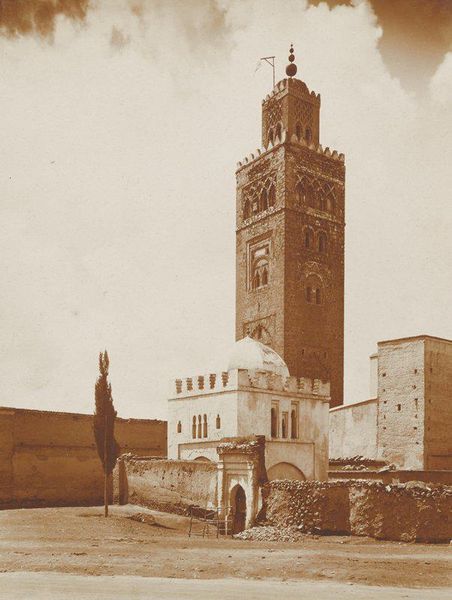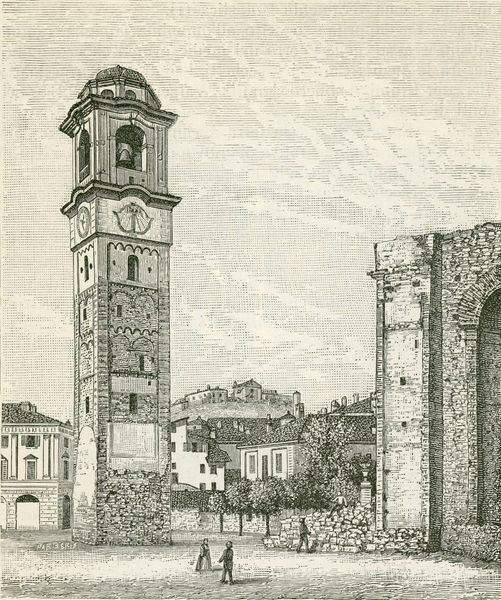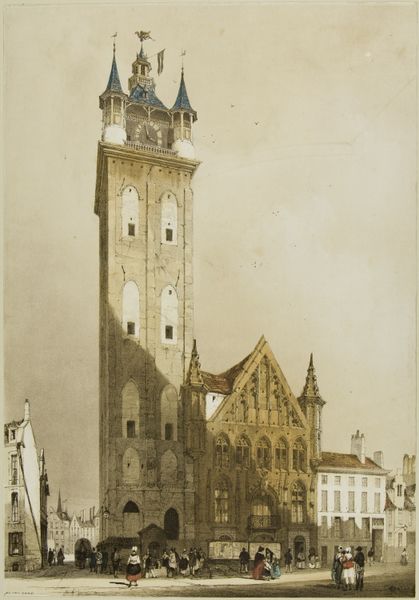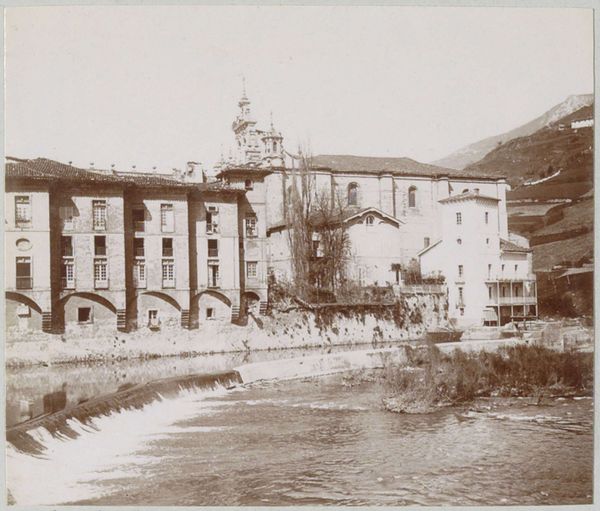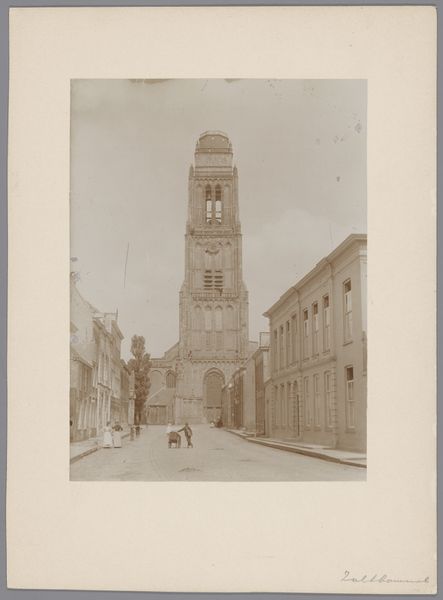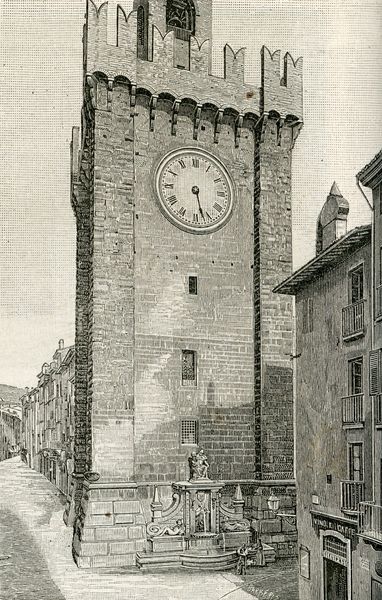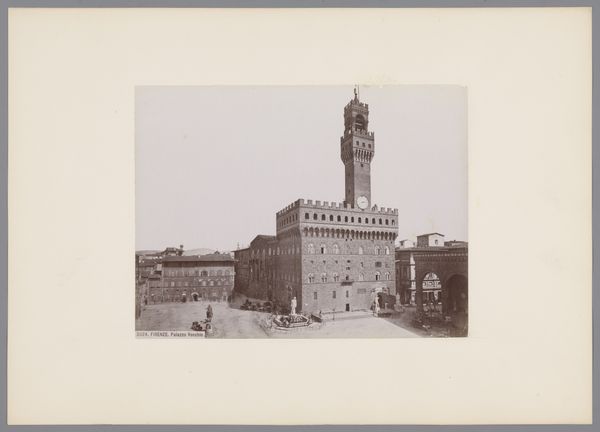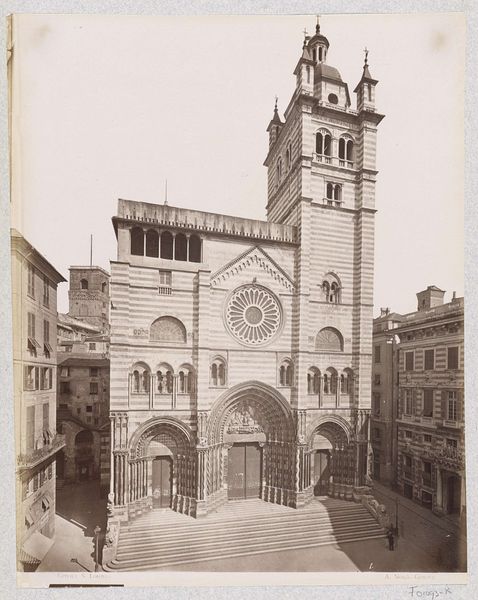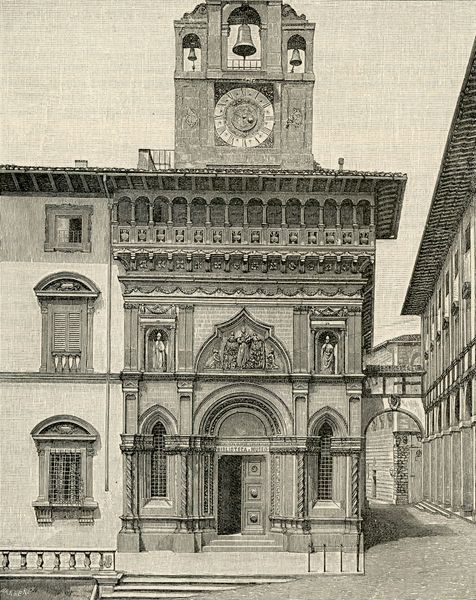
Plein in Fiesole met de toren van de kathedraal en op de voorgrond een zuil met een kruis c. 1882 - 1890
0:00
0:00
photography, albumen-print
#
landscape
#
photography
#
classicism
#
column
#
square
#
cityscape
#
italian-renaissance
#
albumen-print
Dimensions: height 131 mm, width 88 mm
Copyright: Rijks Museum: Open Domain
Curator: What a strikingly symmetrical scene! It feels so carefully composed. Editor: Indeed. What we have here is "Plein in Fiesole met de toren van de kathedraal en op de voorgrond een zuil met een kruis", which translates to Square in Fiesole with the tower of the cathedral and in the foreground a column with a cross. It's a photograph taken by Fratelli Alinari sometime between 1882 and 1890. The medium is albumen print. Curator: The use of albumen gives it that distinct warmth, that sepia-toned dreaminess. It almost elevates the everyday, don't you think? Like it's meant to sell an idyllic fantasy of Italian life. Editor: Precisely. Think of the context: photography was rapidly evolving then. Images like this, consumed by tourists, shaped the perception of Italian culture. The square itself, the column—they all contribute to a narrative carefully curated, reflecting the institutional power of image-making in representing a specific version of history to the world. The framing invites viewers to imagine themselves right there, absorbing history. Curator: I’m interested in the surface texture – you can practically feel the smoothness of the albumen against the fiber base, and contrast it against the rugged stone work in the clock tower. Consider the laborers required to quarry and shape each piece! This contrasts directly with the column, whose smooth perfection conveys luxury and refined taste through sheer manipulation of material. Editor: Yes! And it speaks to the socio-political realities. That clock tower literally tells the time—it's a symbol of industrializing society. That clashes against the cross which suggests the ever present power of the Church even into the end of the 19th Century. How interesting the tower looks as if it protects the basilica; like a classic view changed by more temporal concerns and a new aesthetic of power that challenges religious structures. Curator: What begins as seemingly picturesque thus gains far more critical weight, once the work of unseen hands are taken into account! Editor: Right! And even something like the fading of the print—a process, a chemical reaction over time—can tell us about preservation practices, about the materials used and their life cycles. It adds to the social life of the artwork. Curator: Well, I'm leaving this place with a new appreciation of the layers beneath this still frame. Editor: I couldn't agree more; this photograph continues to reveal so much about the culture that created it.
Comments
No comments
Be the first to comment and join the conversation on the ultimate creative platform.
